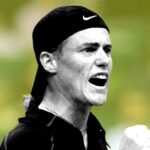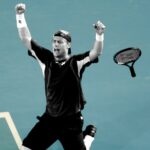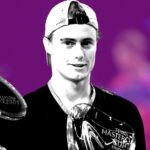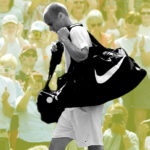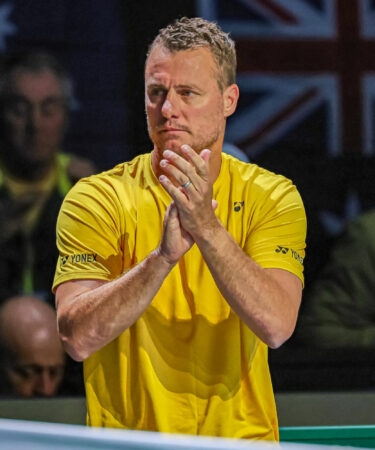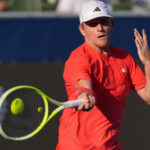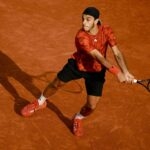January 15, 2002: The day Hewitt became the first-ever top seed to be defeated in the Australian Open opening round
We go back to 2002 to witness how Lleyton Hewitt, the first Aussie man to be seeded first at the Australian Open since Ken Rosewall in 1976, also became the first top seed to be bounced at the first hurdle
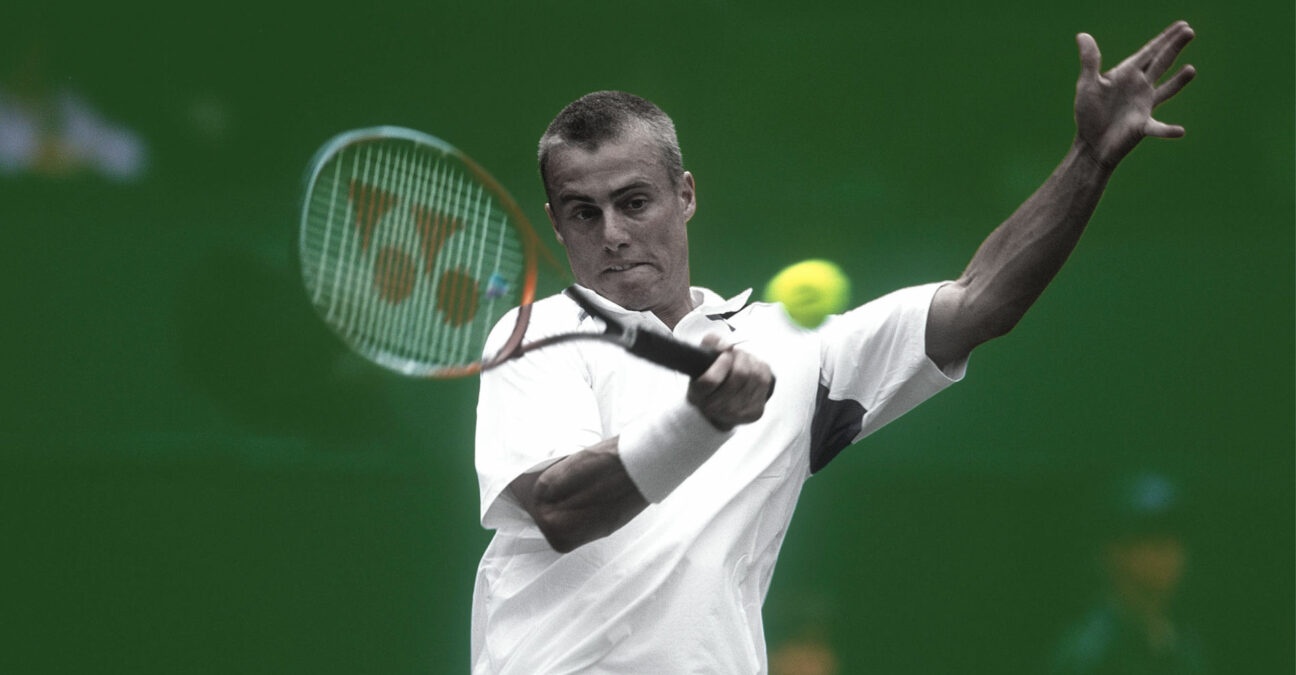 Lleyton HEWITT – 05.07.2002 – Tennis – Wimbledon 2002 – action largeur
Lleyton HEWITT – 05.07.2002 – Tennis – Wimbledon 2002 – action largeur
What happened exactly on that day?
On this day, January 15, 2002, Lleyton Hewitt, who had recently become the youngest world No 1 in tennis history, was upset in the first round of the Australian Open by Spaniard Alberto Martin (1-6, 6-1, 6-4, 7-6).
The first top seed to be defeated in the opening round of the Australian Open, Hewitt had been struck by chickenpox less than two weeks before the tournament and had not fully recovered. It was devastating news for the tournament: after Andre Agassi’s withdrawal and Gustavo Kuerten’s first-round loss, the three top seeds were out before the second round.
The players: Lleyton Hewitt and Alberto Martin
- Lleyton Hewitt, Australia’s star
Lleyton Hewitt was born in 1981. While his father had been a professional Australian football player and his mother a professional netball player, young Lleyton chose tennis. In January 1997, aged only 15 years and 11 months and without an ATP ranking, he was invited to the Australian Open qualifiers, where he won three matches to become the youngest qualifier in tournament history (defeated in the first round of the main draw by Sergi Bruguera, 6-3, 6-4, 6-3).
A year later, in 1998, the young Aussie amazed the world of tennis by clinching his first ATP title before his 17th birthday, in his hometown of Adelaide. On his way, Hewitt defeated the great Andre Agassi (7-6, 7-6) and, in the final, he beat Jason Stoltenberg (3-6, 6-3, 7-6). In 1999, he claimed a second title, in Delray Beach (defeating Xavier Malisse, 6-4, 6-7, 6-1) and finished the season as world No 25, also participating in the Australian triumph in the Davis Cup.
In 2000, Hewitt became the first teenager since Pete Sampras to claim four titles in one season; the most important of these four titles was the Queen’s Club Championships, where he beat the six-time Wimbledon champion Sampras in the final (6-4, 6-4). It was also in 2000 that he obtained his breakthrough Grand Slam result, reaching the semi-finals at the US Open, where Sampras took his revenge from Queen’s (7-6, 6-4, 7-6).
“Rusty”, as his coach Darren Cahill called him, was now a top-10 member, and in 2001, he pushed further by triumphing at the US Open, defeating Sampras in the final (7-6, 6-1, 6-1). Aged only 20, he then became the youngest world No 1 of all time when he won the Masters Cup, defeating Sébastien Grosjean in the final (6-3, 6-3, 6-4). Hewitt was a great mover, very skilled in the art of returning serve and, above all, an incredible fighter. Hewitt’s trademark “COME ON!!” was already famous in the world of tennis.
- Alberto Martin, junior prospect and solid performer
Alberto Martin, from Spain, was born in 1978 and was one of the most promising junior players of his generation, claiming the boys’ title at Roland-Garros in 1996. Although he had had a decent career so far, he never enjoyed the same success on the main tour. He had won three ATP titles, all of them on clay, the most important one in Mallorca, in 2001, where he defeated Guillermo Coria in the final (6-3, 3-6, 6-2). That same year, he reached his highest ranking as world No 34. At the start of 2002, he had never reached the fourth round of a Grand Slam tournament and was ranked 39th in the world.
The place: Australian Open, Melbourne
Unlike the other Grand Slam tournaments, the Australian Open (first known as the Australasian Championships and, later, the Australian Championships) had moved several times throughout the years. In fact, the event switched cities every year before it settled in Melbourne in 1972, and no less than five Australian cities had hosted the event at least three times: Melbourne, Sydney, Adelaide, Brisbane and Perth.
The event was held on grass at the Kooyong Stadium, in an affluent suburb of Melbourne. Its timing had changed several times as well, between early December and January, alternating between being the first Grand Slam of the year to the last. Until 1982, many of the best players skipped the Australian Open, mainly because of the remoteness, and the low prize money, but the dynamic changed slowly over time.
The tournament’s board made big efforts to become as prestigious as the other Grand Slams, which ended up with the event moving to a new location in 1988, in Flinders Park (later known as Melbourne Park), switching from grass to hard courts, and displaying the first-ever center court equipped with a retractable roof. Prizes increased as well, and it wasn’t long before the tournament became the favourite Grand Slam of many players.
The facts : Martin upsets Hewitt IN FOUR SETS
In 2002, for the first time since 1976, the top seed of the Australian Open men’s singles draw was a local player. Lleyton Hewitt, who had been smashing age-related records since he first made his way into the Melbourne main draw at the age of 15, had become the youngest world No 1 in tennis history in November. As the other local star Pat Rafter was declining (in fact, due to shoulder injury, he would never play on the tour again), “Rusty” became the bearer of his nation’s hope to see another Australian player triumph on his own soil after Mark Edmondson’s unexpected title run in 1976.
Then things got complicated. 11 days before the beginning of the first Grand Slam of the year, Hewitt pulled out of the Hopman Cup as he was hit by chickenpox. Once it was established that at the start of the tournament, he wouldn’t be contagious anymore, it was then up to him and his doctor to decide if he was fit to play. Of course, for those who knew him, it was no surprise to see him on court on January 15 for his first round against world No 39 Alberto Martin.
After having easily won the first set though, the world No 1 obviously struggled and was treated several times for blisters at changeovers. Despite the loss of the second and the third sets, Hewitt kept fighting in his trademark manner, pushing his opponent into a tiebreak in the fourth.
I know I went out there today and I wasn’t 100 percent. I’m not Superman.
Lleyton Hewitt
Then, as Martin led 5-4 in the tie-break and was about to serve, the Spaniard made a controversial move: hit by cramps, he called for a medical time-out. After having received treatment, he went on to win the two following points, sealing his win, 1-6, 6-1, 6-4, 7-6. Hewitt was fuming and couldn’t contain his anger in his post-match interviews.
“That is not the right thing to do in the middle of the game,” said Hewitt, as reported by CNN. “I think it is a shocker to do that at 5-4. (…) I don’t know how many referees and umpires we had at the side of the court… I saw about three who all saw that. Somebody has got to put their balls on the line, I think, otherwise somebody will take advantage of that like he did today. (…) I had problems with my legs early on and cramped up… but I will wait until the change of ends because it is not the right thing to do in the middle of a game.”
Alberto Martin simply replied that what he did was not against the rules.
“What was I supposed to do? I was cramping in both legs,” he said. “I asked the umpire if I could call for the trainer, I didn’t think I did anything against the rules. If I continued, I would have been on the floor.”
Hewitt was the first top seed in the tournament’s history to be ousted in the opening round. For the Tournament Director, this was a monumental shock. After Andre Agassi’s last-minute withdrawal and Gustavo Kuerten’s loss on the previous day, he had lost his three top seeds before the second round had begun. The world No 1, on the other hand, left Melbourne angry but not disappointed.
“I’m not as disappointed as I have been in other matches because I know I went out there today and I wasn’t 100 percent,” he said. “I’m not Superman.”
What next? the moment of Thomas Johansson
Alberto Martin would be defeated in the third round of the 2002 Australian Open by Marcelo Rios (6-4, 6-3, 7-6). The tournament would be filled with surprises until the end, with the unexpected triumph of the 16th seed, Thomas Johansson, who defeated Marat Safin in the final (3-6, 6-4, 6-4, 7-6).
Hewitt would remain world No 1 for a total of 80 weeks, including the entire 2002 season, triumphing at Wimbledon (beating David Nalbandian in the final, 6-2, 6-3, 6-2) and at the Masters Cup (defeating Juan Carlos Ferrero, 7-5, 7-5, 2-6, 2-6, 6-4).
After losing his top spot in 2003, Hewitt would remain a top player for a few more years, finishing runner-up to Roger Federer at the 2004 US Open (6-0, 7-6, 6-0) and to Marat Safin at the 2005 Australian Open (1-6, 6-3, 6-4, 6-4). He would exit the top 10 once and for all in early 2006, and, suffering from injuries to his knees, hips, hand, wrist, back and feet, he would never manage to reach the final four of a Grand Slam tournament again.
